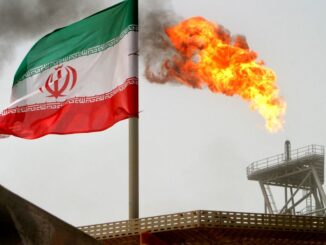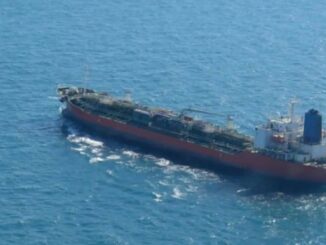
An Israeli airstrike on an Iranian consulate building in Syria killed a top Iranian commander on Monday, in a sharp escalation of the ongoing shadow war between Israel and Iran against the backdrop of the conflict in Gaza.
The airstrike is the latest sampling of a wider Israeli campaign to target top Iranian commanders as well as leaders of Iran’s proxy militant groups, including Hezbollah in Lebanon and Hamas in Gaza.
But this strike is different for two main reasons, both of which point toward a new wave of potential violence and bloodshed across the region, either by Iran directly or through its heavily armed proxy forces.
The first is who was targeted. Brig. Gen. Mohammad Reza Zahedi, who led Iran’s elite Islamic Revolutionary Guard Corps (IRGC) Quds Force in Lebanon and Syria, was the highest-ranking official killed in the strike; his deputy and five other IRGC officials also were killed, according to an IRGC statement.
Zahedi’s death represents one of the largest setbacks for the powerful IRGC since a U.S. strike in early 2020 killed Qassem Suleimani, the head of the Quds Force, which handles Iran’s foreign military and intelligence operations. Zahedi is the highest-ranking Iranian official whom Israel has killed since the Hamas attack on Oct. 7, 2023.
“Zahedi had an enormous position of power,” said Charles Lister, a counterterrorism expert at the Middle East Institute. “He was the point man for anything and everything that the IRGC and Quds Force is doing in Syria and Lebanon, going back years.” This includes Iran’s covert funneling of arms to Hezbollah, which is now considered the most heavily armed nonstate actor in the world.
The second is where the strike took place. The attack targeted a consulate building adjacent to the Iranian Embassy in Damascus, flattening the building and damaging the diplomatic compound. That building, officials and analysts said, was used as a command center for IRGC operations in Syria, a longtime ally of Iran’s under President Bashar al-Assad.
Yet striking a diplomatic compound, or even a semiofficial building next door, is a potentially significant escalation. “Diplomatic facilities are viewed as protected national, sovereign spaces. An attack on a diplomatic facility is like an attack on the country itself,” said Dalia Dassa Kaye, a Middle East expert at the Burkle Center for International Relations at the University of California, Los Angeles. “That is what is making this potentially a game-changer.”
From Iran’s perspective, not only did it lose an important commander in the region, but it also did so in a strike on its sovereign turf, even if only in diplomatic terms (though Iran and its proxy groups are no strangers to attacking other countries’ diplomatic facilities when they feel like it).
“It is unquestionably going to be the case that there will be a forceful Iranian response,” Lister said. “What that is, what form it takes, is still an open question at this point.”
This is jarring news for a region already roiling with tensions and low-intensity conflict over the Israel-Hamas war. “The region is under fire, and everything is interlinked with what happens in Gaza,” Iraqi Foreign Minister Fuad Hussein told a group of reporters during his visit to Washington last week. “It’s very dangerous.”
The Iranian government has been swift in its condemnation of the Israeli strike and vowed retaliation but unsurprisingly didn’t go into details on what that retaliation would entail.
Iran “reserves the right to carry out a reaction and will decide on the type of response and the punishment of the aggressor,” Nasser Kanani, a spokesperson for Iran’s Foreign Ministry, said in a statement.
Based on Tehran’s past behavior, the menu of options could include actions that bring Israel and Iran closer to a direct war—such as a direct Iranian missile strike on Israel—or more indirect counterpunches, such as Iranian strikes on alleged Israeli intelligence service targets in Iraq, or larger or more frequent attacks on Israel by Tehran’s various proxy groups in the region.
Another worrying prospect would be for Iran to give the green light to proxy militias in Syria and Iraq to resume striking U.S. troops and military assets in those countries. Such attacks tapered off in early February after a series of U.S. airstrikes targeting local Iran-backed militias. They could begin anew, Lister warned. “Iran’s traditional response to escalatory Israeli strikes hasn’t always been to hit Israelis—it has been to hit Americans,” he said. “From Iran’s perspective, they are one and the same.”
The other potential worst-case scenario is an Iranian retaliation spiraling into a full-fledged war between Israel and Hezbollah, Iran’s most powerful proxy militant group.
Efforts to defuse tensions between Israel and Hezbollah along Lebanon’s southern border, including by top Biden administration envoys, have so far foundered, turning the Israel-Lebanon border into a major potential flash point.
Since Israel launched its invasion of Gaza to destroy Hamas after the Oct. 7 attack, Israel and Hezbollah have traded blows in a low-intensity conflict on Israel’s border with Lebanon. While no side appears to want a full-scale war—Hezbollah included—that doesn’t mean they couldn’t inadvertently stumble into one with tit-for-tat responses, Kaye said.
“Hezbollah is the most important nonstate actor for the Iranians, it’s [Iran’s] ultimate deterrence force, so the risk is definitely highest for escalation there,” Kaye said.
“Without a question, before today’s airstrike, the tensions have been ratcheting up on the northern [Israel] border,” Lister added. “This makes the likelihood of some miscalculation so much greater than it was yesterday.”



